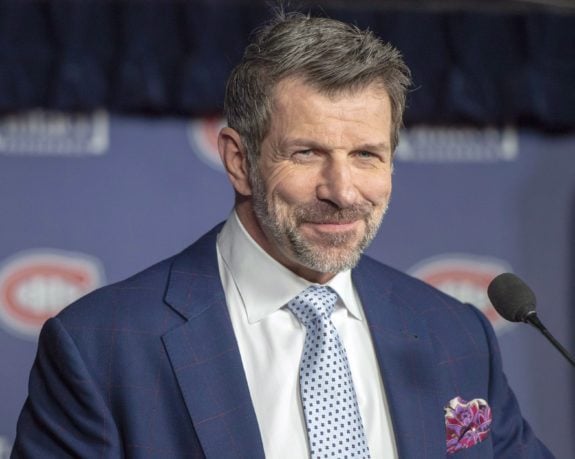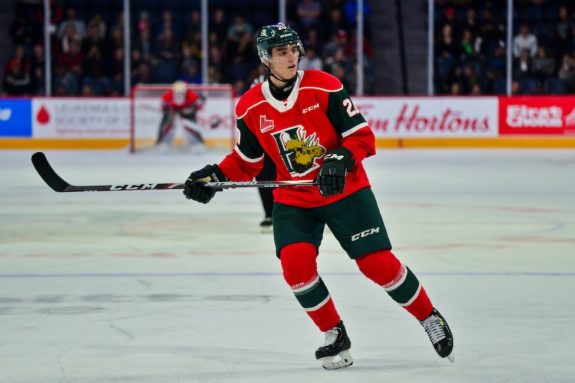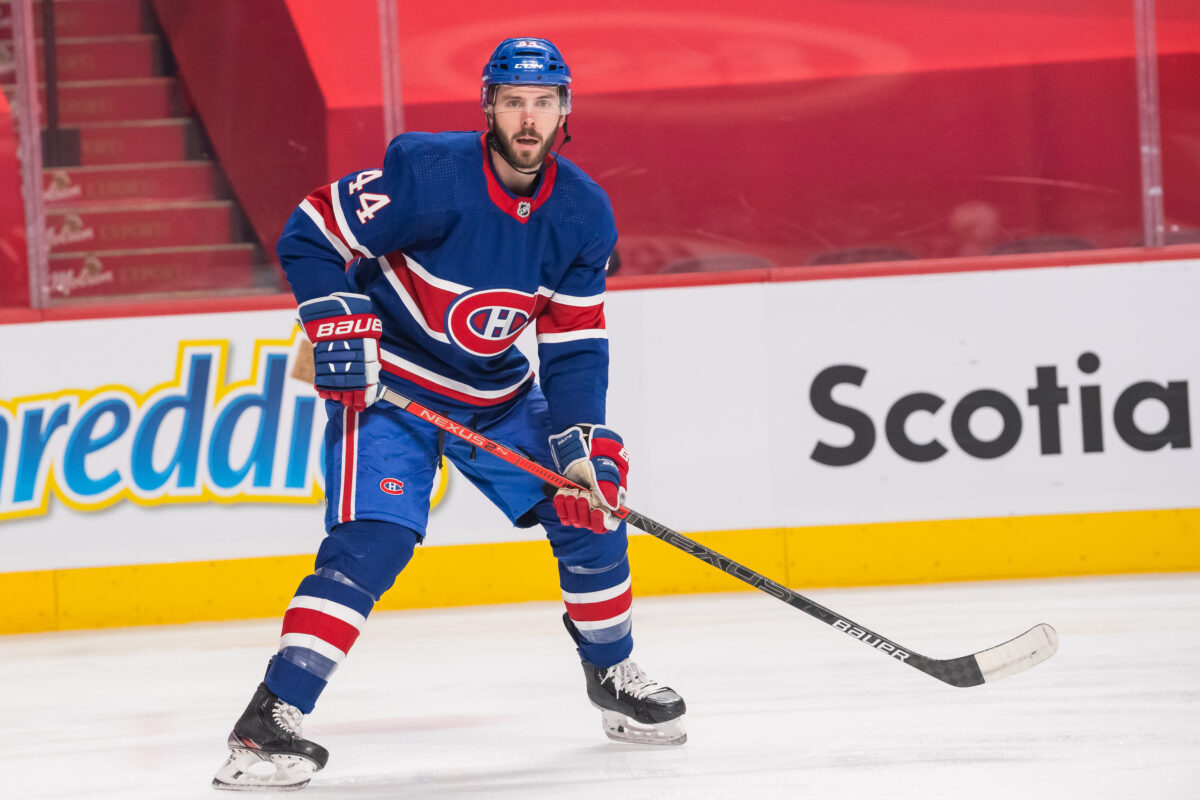The Montreal Canadiens are almost a year and a half removed from their Stanley Cup Final (SCF) run in 2020-21. They made it to the Final due to incredible goaltending by Carey Price and a defence made up of significant, muscular, stay-at-home types of guys like Ben Chiarot, Shea Weber, Joel Edmundson, Jeff Petry and Brett Kulak.
With new management, there has been a lot of change, especially on the blue line, where they seem to be moving away from the rugged, gritty defencemen and looking more at the skilled puck-mover. With these changes, the Canadiens’ defence will look much different to start the 2022-23 season.
Bergevin Molded the Defence After Himself
Former Canadiens general manager (GM) Marc Bergevin had a vision for his team’s defence, and his mindset was that there are players that get you to the playoffs and players that get you through the playoffs. He thought the best way to get through the postseason was to have solid and tough defencemen that hit hard and clear the front of the net. The philosophy wasn’t bad for a deep playoff run but wasn’t a good plan during the regular season. It also isn’t wrong to have stay-at-home defencemen as long as they are paired with a guy who could move the puck. This is where Bergevin’s plan went wrong; he loaded up on big, heavy hitters who were average skaters but didn’t have the skilled players to play with them.

When Bergevin played in the NHL, he played a stay-at-home type game, and when he became GM of the Canadiens, he started moulding his defence after his style of play. That would have been great if this were still the 1990s, but this is the 2020’s. Today’s NHL is faster and more skilled, and without fast and capable defencemen, those stay-at-home types can get buried in their own zone for long periods of time. Bergevin did try to fix these issues with defencemen like Victor Mete, Eric Gustafsson and Mark Streit, but they were all bottom-pairing players who have puck-moving skills but little else.
This archaic way of building a defensive core led to the Canadiens struggling to make the playoffs, but when they did make them, they played well – well enough to make it to an SCF. A SCF, however, doesn’t mean future success, which is a huge reason why the team plummeted to the bottom of the standings the following season. A change was needed, and the defensive core was a mess, so once the new GM Kent Hughes and Senior Vice-President of Hockey Operations (SVPHO) Jeff Gorton gained control of the team, changes were made.
Hughes Starts Making Changes to Canadiens’ Blue Line
Hughes became GM of the Canadiens on Jan. 18, 2022, almost two months after Gorton was hired and Bergevin fired. Gorton made the first move to indicate what direction the Habs defence might be headed when he grabbed Kyle Clague off the waiver wire, a young puck-moving defenceman with skill and speed. Hughes came in a little later and was there for the trade deadline, where he traded away Chiarot and, in a different move, acquired Justin Barron, another young skilled, puck-moving, offensive-minded defenseman. With Weber retiring from hockey, Chiarot traded to the Florida Panthers, and Clague and Barron joining the team, the future of the defence was starting to take shape.
Related: Canadiens Signing Subban Would Be Nothing More Than PR Move
When the Canadiens’ season ended, they finished dead last, and management went to work restructuring the team. Out was Weber’s contract to the Vegas Golden Knights; three of the big four defencemen from the SCF were gone, and the other, Petry, wanted to leave Montreal. At the draft, another hard-hitting big defenceman got traded: Alexander Romanov was moved in a three-team trade where the Habs acquired center Kirby Dach.

A couple of weeks after the draft, Petry got his wish and was traded to the Pittsburgh Penguins along with Ryan Poehling for Mike Matheson and a draft pick. Matheson is again another puck-moving transitional defenceman who will help the team on offence. That made the core-four defencemen from the SCF all removed from the Canadiens within six months of Hughes being hired.
Canadiens’ Defence is Younger, Faster & More Skilled
With all the new additions and rookies filling the empty spots, the Canadiens’ defence is now younger, faster and more offensively skilled than under the Bergevin regime. With players like Barron and Chris Wideman – signed by Bergevin originally – Matheson, and rookie Jordan Harris – four of the six defensemen are puck movers with offensive skill. This leaves only Edmundson and David Savard as the lone stay-at-home guys to help clear the front of the net and play hard in the defensive zone.

Going into next season, the Canadiens’ lineup on defence should look like this:
- Matheson – Savard
- Edmundson – Barron
- Harris – Wideman
- Corey Schueneman
There is nothing to write home about right now, but once Barron and Harris gain experience, this defensive unit will only get better. Add rookies Kaiden Ghule, Arber Xhekaj, and Mattias Norlinder, who could also see time with the Canadiens, and you have a nice young mix of talented defencemen, just very inexperienced.
Bergevin might have liked the muscular stay-at-home guys on his blue line, but he also drafted all these young rookies and prospects. It wasn’t that he didn’t want offensively minded defensemen; he just thought drafting was more straightforward than trading or signing them. Hughes now has the tools to create a more modern defence, and he can thank Bergevin for providing him with the young players to do so.
